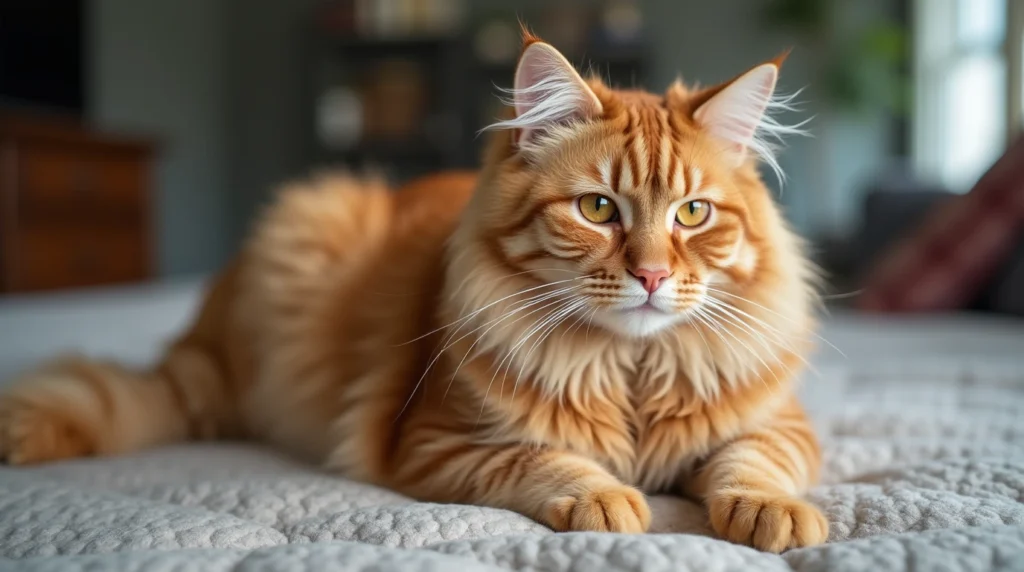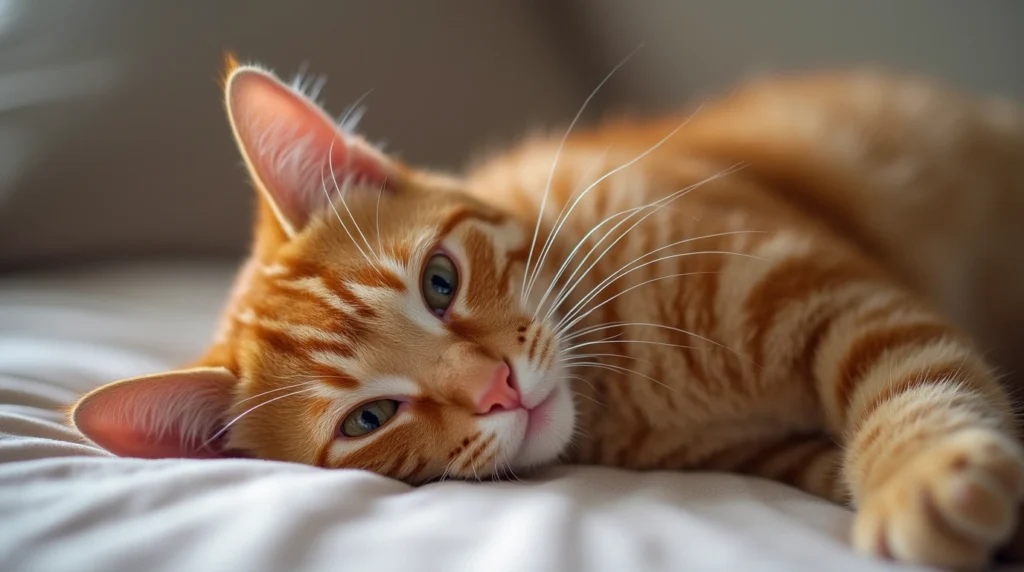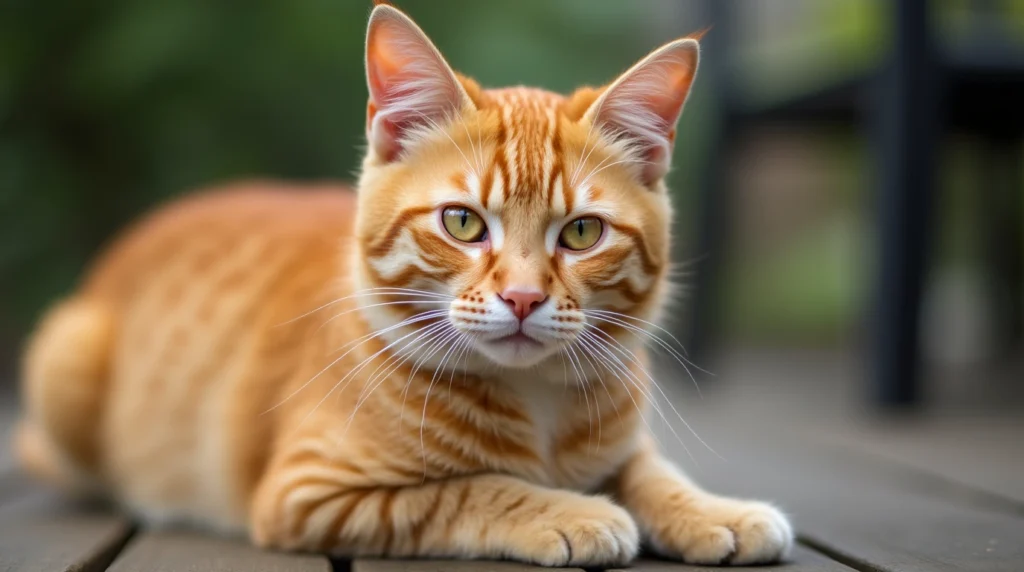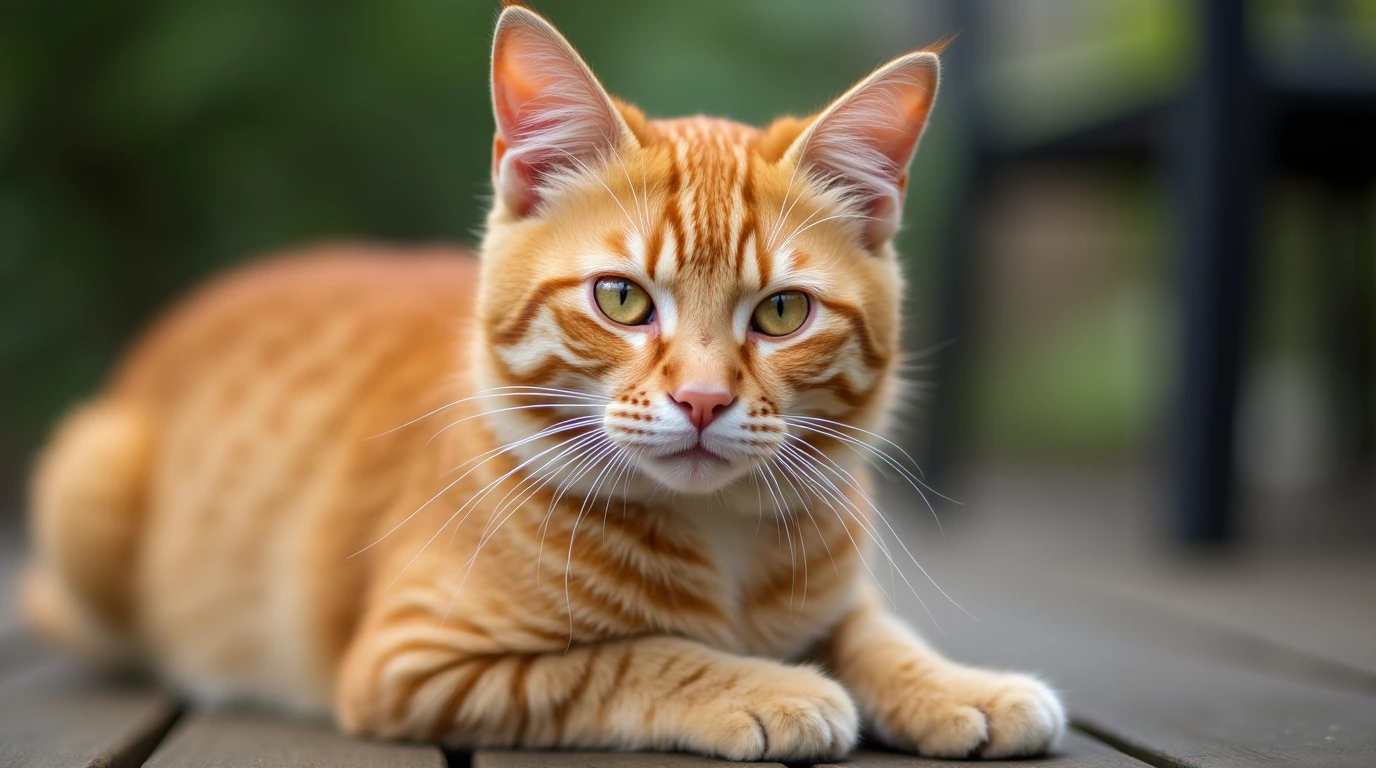The Irresistible Charm of the Orange Maine Coon
The moment someone mentions an Orange Maine Coon, a very specific image pops into mind: a majestic, lion-like feline with a plush coat, intelligent eyes, and the quiet confidence of a creature that knows it rules the living room. And let’s be honest — if you’ve stumbled upon this article, chances are you’re already a little bit enchanted.
Whether you’re researching a potential new family member, or you’ve seen one of these flame-colored beauties on social media and thought, “Wait — what kind of cat is that?”, you’re in the right place. The Orange Maine Coon isn’t just a visual showstopper. It’s a breed with depth: affectionate, surprisingly gentle despite its imposing size, and blessed with a personality that balances independence with fierce loyalty.
In this guide, we’ll walk through everything you need to know before bringing one home — from their origins and signature traits to what it actually takes to live with one. You’ll get an honest look at their grooming needs (spoiler: it’s not nothing), their quirks, and even some red flags to watch for when adopting.
So, if you’re wondering whether this stunning feline is your dream cat — or just too much fluff to handle — keep reading. By the end, you’ll know.
Table of Contents
🧬 Origins of the Orange Maine Coon: Nature’s Gentle Giant Meets Fiery Hue

Every cat has a story — and the Maine Coon’s is something of a legend. Known as one of America’s oldest natural breeds, the Maine Coon cat is thought to have originated in (you guessed it) Maine, where it adapted to the cold northeastern climate with its thick, water-resistant coat and rugged build. But where does the orange come in?
The truth is, there’s no such thing as a breed-specific “Orange Maine Coon.” The orange hue — often referred to as red, ginger, or even “sunburst” — is a color variation, not a separate breed. And it’s not exactly rare either. Orange Maine Coons are fairly common, thanks to dominant genetics associated with the “O” (orange) gene, which is sex-linked and more commonly expressed in males. Fun fact? Around 80% of orange cats are male — a curious quirk of feline biology.
From Forest Cats to Internet Celebrities
There’s some romantic speculation that Maine Coons descend from longhaired cats brought by Viking explorers or Marie Antoinette’s exiled pets. While there’s no definitive proof for these tales, what’s clear is that these cats developed naturally over time, evolving into the large, sturdy, sociable animals we see today.
As orange variations gained popularity — particularly due to their bold, photogenic appearance — they started popping up more frequently in breeding programs. Still, every orange Maine Coon today carries the same lineage as its more classic brown tabby or solid black counterparts.
Why Is Their Orange So Striking?
Orange Maine Coons stand out not just because of their size, but because the color amplifies their lion-like features. Their fur often has subtle striping (classic tabby patterns), and the longer, luxurious ruff around their neck can look downright regal in golden-orange tones. Depending on lighting, some even appear to glow.
🐈 Physical Characteristics of the Orange Maine Coon: Big, Bold, and Beautiful
If you’ve ever seen an Orange Maine Coon in person, you probably didn’t forget it. These cats don’t just enter a room — they take it over. With their massive frames, majestic manes, and that iconic reddish-gold coat, they straddle the line between wild beast and plush teddy bear. But let’s get specific.
Size and Structure: Built Like a Small Lion
The Maine Coon is one of the largest domesticated cat breeds in the world. Males can weigh between 13–18 pounds, with some reaching 20+ pounds. Females are typically smaller but still larger than the average housecat, weighing in at 8–12 pounds. But it’s not just about weight — these cats are long. Full-grown adults can stretch over 3 feet from nose to tail tip.
- Muscular build: Strong legs, broad chests, and thick necks give them a robust, almost dog-like physique.
- Long bushy tails: Often as long as their bodies and held proudly upright — it’s one of their signature features.
- Large paws: With tufts of fur poking out, these are ideal for winter terrain (and utterly adorable).
Coat and Color: The Flame That Draws You In
The orange variation — sometimes called red, ginger, marmalade, or sunset — comes in different patterns:
- Classic tabby (swirls and whorls)
- Mackerel tabby (thin stripes)
- Solid red (rare and striking)
Their fur is medium to long, silky but dense, with a prominent mane around the neck and longer hair on the underbelly and britches. It’s not uncommon for their coat to shift slightly in tone with the seasons or sunlight — adding to the almost mythical aura.
Facial Features and Expression
- Eyes: Large, expressive, often gold or copper in orange variants — giving them a wise, knowing look.
- Ears: High-set and tufted, lending them a lynx-like appearance.
- Muzzle: Prominent, square, and slightly elongated — no squished faces here.
🧠 Personality and Temperament of the Orange Maine Coon: The Gentle Giant with a Comedic Streak

Let’s set the record straight — the Orange Maine Coon may look like a miniature lion, but its temperament is pure marshmallow. These cats are walking contradictions in the best way: commanding in presence, but endearingly goofy in behavior. If you’re expecting aloof feline indifference, prepare to be surprised.
Affectionate, But Not Clingy
Maine Coons are famously sociable, and orange ones seem to turn the charm up to eleven. They love to be where the action is — sitting in on Zoom meetings, watching you cook, or “helping” you fold laundry — but they rarely demand constant petting or lap time. Instead, they’ll hover nearby, offering soft chirps and gentle nudges.
- Affectionate: They’ll follow you from room to room but won’t guilt-trip you if you’re busy.
- Loyal: Often bond closely with one or two people but remain friendly with others.
- Emotionally intelligent: Many owners swear their Maine Coons can read the room — offering comfort during down moments and comic relief when things feel too serious.
Playful, Intelligent, and Hilariously Weird
Orange Maine Coons are clever — sometimes too clever. They learn routines quickly and often invent games of their own (like knocking items off shelves just to get your attention). Their curiosity keeps them puppy-like well into adulthood.
- They love water: Many Maine Coons are drawn to sinks, bathtubs, or even showers. Some dip their paws into their water bowls just for fun.
- Dog-like traits: Some fetch, come when called, or greet you at the door.
- Vocal without being loud: They’re known for their chirps, trills, and mumbles — not full-on meowing.
Their orange coloration may be purely genetic, but ask a group of Maine Coon owners and you’ll hear theories that “the orange ones” are goofier, more playful, or just a touch more theatrical. Scientific? Not at all. Adorably biased? Absolutely.
🏠 Living with an Orange Maine Coon: Daily Life, Grooming, and What No One Tells You
Bringing home an Orange Maine Coon isn’t just adopting a pet — it’s welcoming a large, intelligent, slightly mischievous roommate with fur. They’re not just cats; they’re a presence. And while they’re adaptable and easygoing, they come with a few surprises that first-time owners might not anticipate.
Daily Care and Coexistence
Orange Maine Coons are relatively low-maintenance emotionally, but they do have high needs in terms of engagement. They’re not the type to lounge all day — at least not until they’ve explored, interacted, and checked in on everyone first.
- Routine is key: They thrive with predictable schedules for meals, playtime, and even your attention.
- Mental stimulation: Puzzle feeders, interactive toys, and hide-and-seek games help prevent boredom (and boredom = mischief).
- Coexistence with other pets: Typically excellent with dogs and other cats, as long as introductions are handled patiently.
They’re present without being invasive — the kind of pet that watches you fold laundry like it’s performance art, but doesn’t demand to be picked up while you do it.
Grooming: Fluff Takes Effort
Their majestic coat doesn’t stay camera-ready on its own. While Maine Coons have silky fur that resists matting better than some long-haired breeds, neglecting grooming can lead to tangles — especially around the armpits, belly, and rear.
- Brush 2–3 times per week to prevent mats and reduce shedding.
- Check behind ears and under legs — these are mat-prone zones.
- Trim nails monthly and check ears for wax buildup.
Also? They shed. Not explosively, but consistently. You’ll notice orange tufts on dark clothes, furniture, and… in your coffee, if you’re not careful.
Diet and Health Routines
They’re big cats with big appetites — but not all calories are created equal. Maine Coons benefit from high-protein, lower-carb diets to support their muscular frames and joint health.
- Feed quality wet or dry food formulated for large breeds.
- Watch their weight: Obesity can sneak up on them due to their slow metabolism.
- Water access is essential: Many prefer running water fountains — which also becomes an enrichment tool.
Health Considerations for Orange Maine Coons: Big Hearts, Bigger Risks?
When you look at an Orange Maine Coon, health concerns might be the last thing on your mind — they exude vitality and confidence. But behind those mesmerizing golden eyes and that kingly mane, there are a few health quirks worth knowing. These cats may be hearty, but like all pedigreed breeds, they come with genetic predispositions you’ll want to stay ahead of.
Common Health Issues in Maine Coons
While the color orange doesn’t directly impact health, the breed’s shared lineage means certain conditions are more likely, regardless of coat variation.
- Hypertrophic Cardiomyopathy (HCM): A common and serious genetic heart disease in Maine Coons. It can lead to heart failure if left undetected.
- Hip Dysplasia: Due to their large size and frame, Maine Coons can be prone to this joint issue, especially as they age.
- Spinal Muscular Atrophy (SMA): A rare but breed-specific genetic condition that affects the spinal cord, leading to muscle wasting.
What Responsible Owners Can Do
- Early screening matters: Genetic testing for HCM and SMA is now widely available and recommended, especially if adopting from a breeder.
- Annual vet visits: These aren’t optional — they’re your best line of defense.
- Weight management: Excess weight exacerbates joint issues and can mask underlying health conditions.
- Dental care: Often overlooked, but dental disease can significantly affect lifespan and quality of life.
Lifespan and Quality of Life
The average lifespan of a Maine Coon is 12–15 years, though many live longer with proper care. Keeping them active, mentally engaged, and well-fed (without overfeeding) can extend both their years and their comfort.
Think of their health as an investment: the more proactive you are, the fewer costly or heartbreaking surprises you’ll face later. And yes — the big vet bills can be real. It’s not fear-mongering, it’s just part of the reality of loving a high-maintenance, high-reward breed.
🤔 Is the Orange Maine Coon Right for You? A Reality Check with a Fluffy Twist
Let’s be real — it’s easy to fall for the Orange Maine Coon. Their looks alone could convince anyone to hit “Adopt Now.” But beyond the striking fur and larger-than-life charisma is a living, breathing companion with needs, quirks, and a personality that may or may not match your lifestyle. This section is your honest gut-check.
Ideal Living Environments
Maine Coons, orange or otherwise, adapt surprisingly well to a range of home types — but some setups are a better fit than others.
- Best for: Homes with space to roam (even if vertical), families with older kids, or cat-savvy individuals who understand feline boundaries.
- Challenging for: People with allergies, strict minimalist households (they will scatter toys and fur), or those away from home constantly.
That said, they’re adaptable — as long as you provide stimulation, routine, and attention, they’ll thrive in anything from apartments to farmhouses.
Compatibility with Children and Pets
This breed is unusually tolerant. Many Orange Maine Coons are patient with respectful kids, chill around dogs, and often act as peacekeepers among other pets. But they don’t enjoy chaos — they’re not a fan of being chased, grabbed, or cornered.
- Kids: Yes, if taught boundaries.
- Dogs: Usually — especially if the dog is laid-back.
- Other cats: Often, but they prefer to be the top diplomat (or at least the comedian of the group).
Personality Fit
Ask yourself:
- Do you want a cat that “talks” to you?
- Are you OK brushing your pet multiple times a week?
- Can you live with fur on everything you own?
If yes — then the Orange Maine Coon might be your spirit animal. If not, it’s better to admire them from afar (your lint roller will thank you).
🐾 Adoption and Breeder Information: Finding Your Orange Maine Coon, the Right Way

So you’ve decided: you’re ready for the fluff, the chirps, the ridiculous lounging poses. Now comes the trickier part — finding a healthy, well-socialized Orange Maine Coon from a source that values the breed as much as you do.
Where to Start: Breeder vs. Rescue
There are two main paths to adopting a Maine Coon: ethical breeders and rescue organizations. Both come with pros, cons, and things to look out for.
- Reputable breeders will:
- Provide genetic testing results for HCM and SMA
- Allow you to meet the kittens’ parents
- Offer health guarantees and vaccination records
- Have a waitlist — and that’s a good thing
- Rescue organizations:
- May not always have orange variants available
- Often rehome older cats (a great option if you’re not set on a kitten)
- Typically have lower adoption fees and cats already vetted
Avoid online listings that seem too good to be true. A $300 “purebred Maine Coon kitten with papers” shipped immediately? 🚩🚩🚩. Scams and backyard breeders are unfortunately common, and they often skip health testing, early socialization, or ethical breeding practices.
Cost Breakdown: What to Expect
Adopting from a breeder isn’t cheap — and it shouldn’t be. Here’s a rough guide:
- Breeder kitten: $1,200–$2,500+
- Rescue adoption: $100–$500
- Startup costs (supplies, initial vet visit, etc.): $300–$600
Investing upfront often saves you vet bills and behavioral issues later.
Red Flags to Watch Out For
- No contract or health guarantees
- No questions for you as a buyer (good breeders vet you, too)
- Refusal to let you visit the cattery
- “Mini Maine Coon” or “Teacup” versions — these don’t exist
Big Hearts, Big Fur, and a Whole Lot of Soul
If you’ve made it this far, you’re probably already picturing an Orange Maine Coon stretched across your couch like royalty or chirping at birds through the window with quiet fascination. And honestly? That mental image isn’t far from the truth. These cats aren’t just companions — they’re characters. Quirky, loyal, majestic, and yes, sometimes just a bit ridiculous.
But behind that larger-than-life presence is a breed that requires thoughtful care, space to play, and a person who understands that “independent” doesn’t mean absent. They’ll be near you, not on you. Observing, commenting, participating — like a wise (and very fluffy) roommate with a knack for comic timing.
Choosing an Orange Maine Coon isn’t just about aesthetics. It’s about welcoming a living personality into your world — one with needs, feelings, and a very specific opinion about your empty laundry basket.
So if you’re looking for a cat that’s equal parts companion and co-conspirator, one that blends elegance with absurdity and love with a bit of sass, this might just be your perfect match.
And if you’re still unsure? Just spend five minutes with one.

